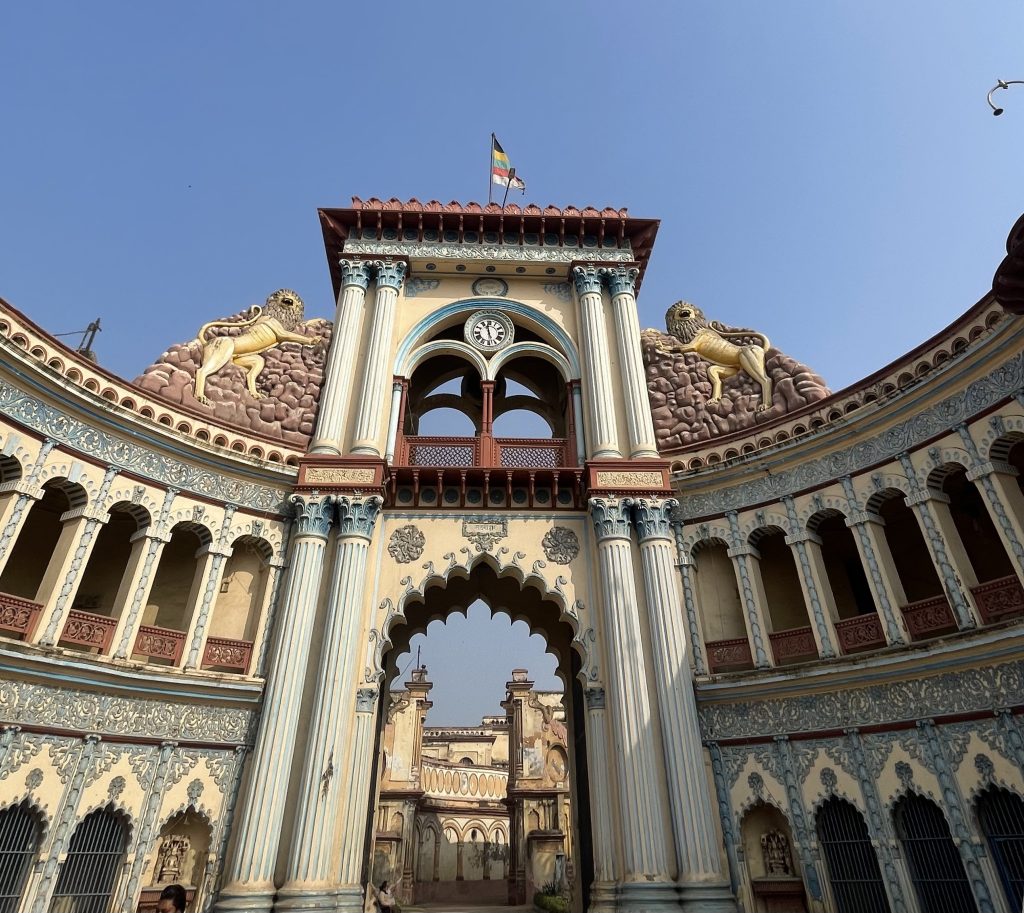

Ayodhya, India
Amidst India’s temple revival, cities are being redesigned to reflect Hindu heritage and nationalist ideas, writes Huzaifa Riyaz in Jacobin magazine (Summer). The city of Ayodhya, the centerpiece of the temple revival, is also a model of this attempt by the ruling Bharatiya Janata Party (BJP) “to reshape public space in line with Hindu nationalist ideology. What appears as heritage restoration is in fact the construction of a singular religious identity at the expense of the pluralism that once defined Indian cities,” Riyaz writes. In Ayodhya, the Ram Path is a pilgrimage in infrastructure. From the moment a visitor enters, they are immersed in an architecture of devotion, saffron banners, LED-lit arches, sculptures from Hindu epics, and curated “heritage” facades. The urban space is choreographed like a temple procession, reinforcing one message: this is the sacred heart of the nation, and you are walking through its myth. While Ayodhya is seen as a new “Hindu civilizational capital,” other cities, such as Varanasi and Ujjain, have also become showcases for this new kind of “sacred landscape,” Riyaz writes. These cities are drawing many tourists, which is part of state efforts to join religious tourism and economic growth.
The facelifts that these cities undergo, usually in states run by the Hindu nationalist BJP, are intended to monumentalize Hindu religious sites while removing the urban clutter that is seen as conflicting with these urban visions. “Temples are magnified, processional routes widened, and symbolic architecture installed. Simultaneously, Muslim shrines, Dalit neighborhoods, and mixed-use communities are marginalized. The message is clear: the city belongs to one tradition, one identity.” Riyaz argues that these developments signal a shift in how cities function. “Traditionally, cities are places of diversity, negotiation, and memory. In India’s temple towns, they are becoming tools of civilizational assertion. Tourism boards, real estate developers, and religious trusts align with state governments to push a single narrative.” Under the government of Indian Prime Minister Narendra Modi, the Smart Cities Mission promised to modernize India’s urban core through digitization, efficiency, and “world-class” amenities. Yet beneath this technocratic language lies a political blueprint. These cities are not only being upgraded; they are being rewritten to reflect the priorities of a Hindu nationalist state and a neoliberal economy,” Riyaz writes.
(Jacobin, https://jacobin.com/2025/07/india-hindutva-modi-urban-infrastructure)